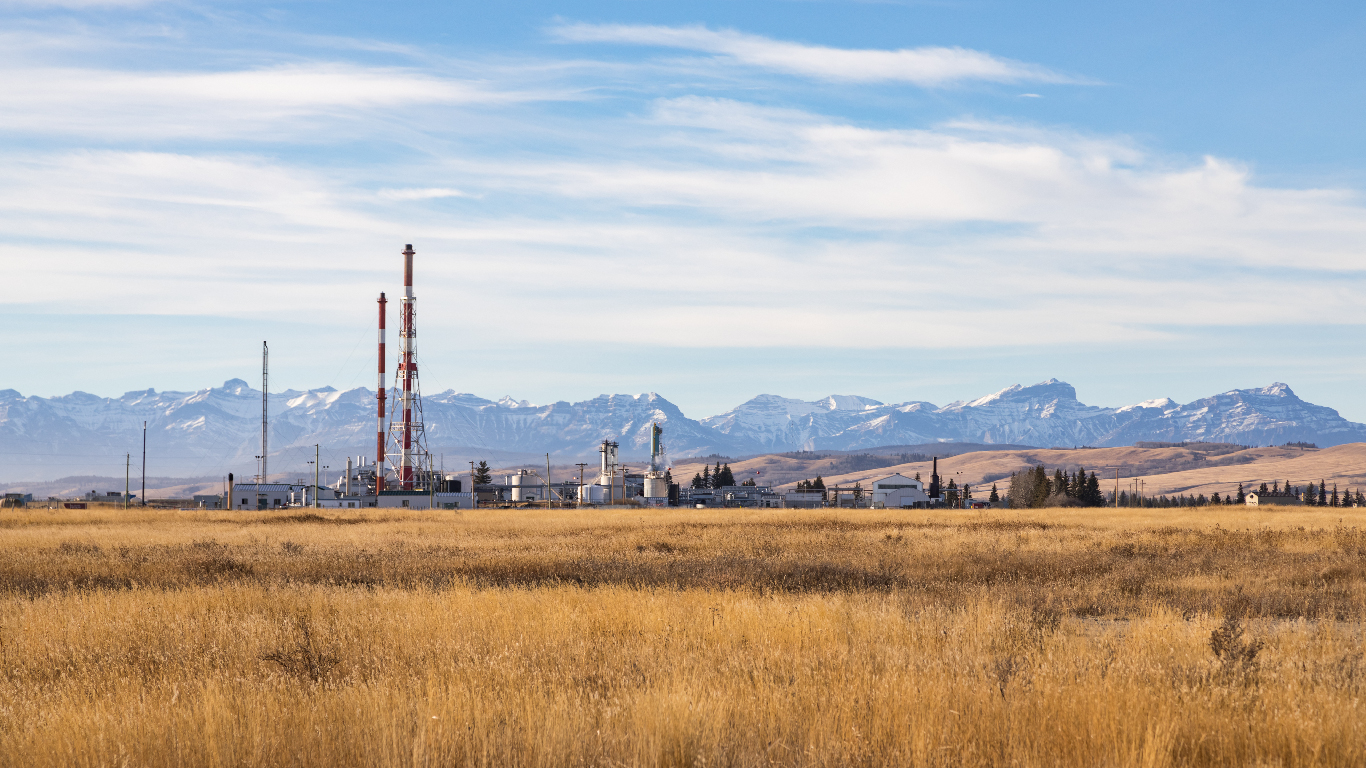
Amid global uncertainty in the energy markets early in 2022, especially following Russia’s invasion of Ukraine combined with increased demand from the reopening of economies, Canada’s natural gas storage numbers hit another high—but were still not enough to reverse a historic decline in inventory levels.
An all-time high of about 14.7 billion cubic metres of natural gas were injected into storage in 2022, up from the previous record of nearly 14.6 billion cubic metres in 2020. The current data series tracking monthly storage data goes back to 2016, when over 9.7 billion cubic metres were stored.
The highest monthly injection amount was in June 2020, when over 2.8 billion cubic metres were added to storage facilities. Inventory levels start increasing in April each year and peak in the summer in preparation for the colder months, which see increased gas usage. Inventory levels typically start declining in October each year.
Withdrawals exceeded injections in 2022
Although a smaller proportion is used as an energy source for electricity, natural gas is largely used for heating in the winter months, which see the largest monthly withdrawals from storage. The highest withdrawal on record, nearly 5.4 billion cubic metres, was in January 2022.
Withdrawals for 2022 totalled over 16.3 billion cubic metres, exceeding the amount injected into storage.
In January and February 2021 and 2022, withdrawals topped 4 billion cubic metres; there have been eight other times since January 2016 when they topped top 3 billion cubic metres.
Inventory declining steadily since 2016
The closing inventory is what is left in storage at the end of the month, after accounting for the opening inventory, injections, withdrawals, and other adjustments such as meter inaccuracies and/or leakage or other losses. In December 2022 the closing inventory was nearly 19.9 billion cubic metres, down from the more than 21.5 billion cubic metres measured in December 2021.
About 11.0 billion cubic metres—the lowest monthly figure recorded during the current data series—was the closing inventory for March 2022, compared with a high for the month of March of about 21.0 billion, recorded in 2016.
The highest monthly closing inventory was in October 2020, when nearly 28.2 billion cubic metres were in storage at the end of the month. There have been six months on record when closing inventories stood above 27 billion cubic metres.
Domestic receipts up, imports down in 2022
The monthly rates of increase and decrease of both receipts and imports of natural gas fluctuate far less than those for storage injections and withdrawals. In December 2022, there were about 16.2 billion cubic metres worth of receipts from fields, gas gathering systems and/or gas plants, up from 15.4 billion in January 2022 and accounting for most transmission volume. There were 14.1 billion cubic metres of receipts in February 2022, the low mark for the year.
There were nearly 2.8 billion cubic metres of natural gas imported by pipeline from the United States in December 2022, along with nearly 21.8 million cubic metres of receipts from liquefied natural gas (LNG) marine terminals. Together, they made up the remaining 14.7% of natural gas received by transmission lines, a proportion similar to January 2022.
On a yearly basis, a record 186.1 billion cubic metres in receipts from fields, gas gathering systems and/or gas plants were recorded for 2022, up 7.3% from 173.4 billion in 2021. The 30.0 billion cubic metres of imports from the United States was in line with 2021 (30.2 billion), while the 274.2 million cubic metres of receipts from LNG marine terminals—destined almost entirely to the US market— were down by nearly three-fifths (57.5%) from 2021 (645.5 million).
Where does it all go?
In December 2022, natural gas deliveries to industrial consumers in Canada totalled about 8.3 billion cubic metres, with over 70% going to Alberta. The industrial sector in Alberta—the single largest consumer of natural gas in the country—received a record 5.8 billion cubic metres in December, the majority of which was used as fuel by the energy producing sector.
In the same month, there were about 2.4 billion cubic metres in deliveries to commercial and institutional consumers, such as government institutions, office buildings, and other customers engaged in wholesale or retail trade. Over two-fifths (42.9%) of these consumers were in Ontario, and one-quarter were in Alberta (24.6%).
Another 2.5 billion cubic metres were delivered to residential consumers, over two-fifths (43.5%) of which went to Ontario households. On average, consumers paid 26.9% more in 2022 than in 2021 for natural gas annually, while prices for fuel oil and other fuels rose 59.6%—the increase for the latter impacting mostly Atlantic Canadians.
An increasing amount of natural gas was exported to the United States in 2022, which expanded its exports of liquified natural gas to Europe following the Russian invasion of Ukraine and the resulting instability in the global natural gas market. The United States has the facilities to liquify natural gas for export, while Canada currently lacks that infrastructure. In December, exports of natural gas exceeded 8 billion cubic metres for the first time since the beginning of this series.
Looking ahead
Stay tuned for future releases of the Monthly Natural Gas Storage Survey, as storage levels begin to pick up for the summer months.
Contact information
For more information, contact the Statistical Information Service (toll-free 1-800-263-1136; 514-283-8300; infostats@statcan.gc.ca) or Media Relations (statcan.mediahotline-ligneinfomedias.statcan@statcan.gc.ca).
